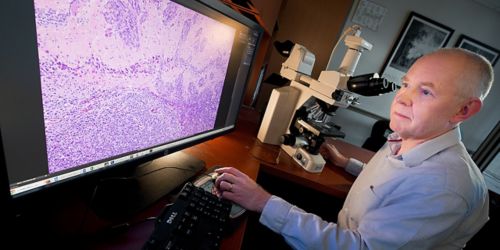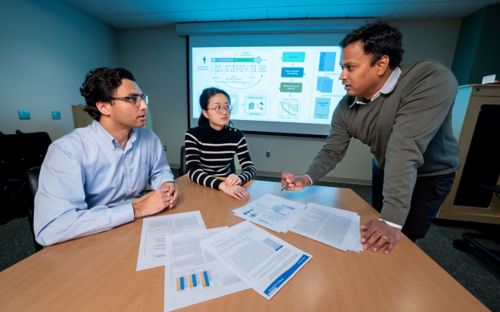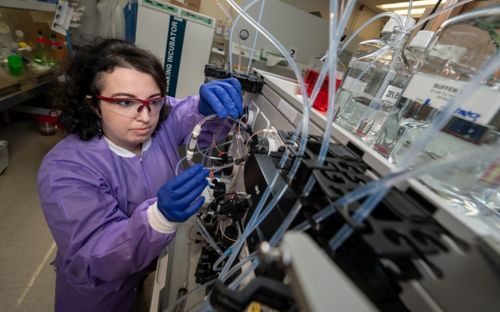Producing the cancer reference book for central nervous system tumors

David Ellison, MD, PhD, is an editor and expert adviser on the World Health Organization’s Classification of Central Nervous System Tumours.
Even the best cancer care teams need reference materials. Clear guidelines and comprehensive information on how to identify and treat different types of cancer help to ensure better care for patients worldwide. Pathologists and clinicians alike learn from and use this information.
The WHO Classification of Tumours series, or simply WHO blue books, are authoritative and concise reference books for the histological and molecular classification of tumors. The series, updated every four years, is currently in its fifth edition. A group of internationally recognized experts collaborates to identify what new findings are important enough to make each new volume and to edit the contributions of the authors.
David Ellison, MD, PhD, chair of the St. Jude Pathology Department, is an editor and expert adviser for the blue book on central nervous system (CNS) tumors. In that role, he manages the section authors, as well as the content of new sections in each edition.
The WHO classification has 17 volumes. Tumor diagnosis through pathologic evaluation ultimately affects the post-surgical management of all patients with cancer.
Ellison edits the volume used by neuropathologists, who determine and report the diagnoses of CNS tumors.
“Other pathologists, clinicians, radiologists, allied medical staff and researchers working within the CNS tumor specialty also use this reference,” he said. ‘The book affects postsurgical management of patients.”
Each edition is updated with the latest scientific findings that increase our knowledge of how tumors differ from one another in terms of biological behavior and the course of the disease. The findings inform creation of diagnostic terms. Of crucial importance to patients: The work also provides information on which treatments offer the best chance of a cure.
Big data provides a new window into classification
Ellison said that in his 15-year involvement with blue books, genomics and tumor sequencing have tremendously altered the work of scientists and clinicians.
“We used to produce a new edition every seven years,” he said. “But advances in our understanding of molecular alterations in CNS tumors mean we need to revisit tumor classification more often. So now we update the edition every four years.”
CNS tumors used to be classified solely by their histopathologic features—the architectural and cellular features of the tumor tissue viewed through a microscope.
“Genomics has shown us the genetic alterations and epigenetic changes that serve as biomarkers to identify tumors and their potential biologic behavior,” Ellison said. “That was a sea change for the field. In 2016, we began using molecular and genetic changes with clinical implications to complement histopathologic features of tumors.”
That change has redefined tumor classification.
In the latest edition of the WHO blue book, that approach was expanded.
“This edition reflected changes in my work as a histopathologist,” Ellison said. “I now order a range of molecular tests, as well as look down the microscope, and integrate all the findings into my diagnostic reports.” New methodologies available to clinical pathology laboratories have resulted in the molecular characteristics of tumors becoming as important to tumor classification as the histopathologic characteristics. Patients are the beneficiaries.






